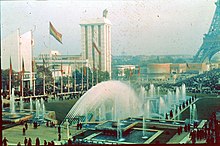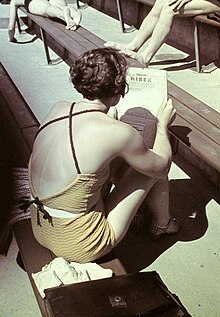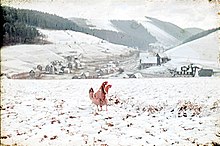This article has multiple issues. Please help improve it or discuss these issues on the talk page. (Learn how and when to remove these messages)
|












Agfacolor was the name of a series of color film products made by Agfa of Germany. The first Agfacolor, introduced in 1932, was a film-based version of their Agfa-Farbenplatte (Agfa color plate),[1] a "screen plate" product similar to the French Autochrome. In late 1936, Agfa introduced Agfacolor Neu (New Agfacolor), a pioneering color film of the general type still in use today.[2] The new Agfacolor was originally a reversal film used for making "slides", home movies and short documentaries. By 1939, it had also been adapted into a negative film and a print film for use by the German motion picture industry. After World War II, the Agfacolor brand was applied to several varieties of color negative film for still photography, in which the negatives were used to make color prints on paper. The reversal film was then marketed as Agfachrome. These films use Color Developing Agent 1 in their color developer.[3]
Agfacolor Neu, called simply Agfacolor after its predecessor had been retired, was the German response to Technicolor and Kodachrome. Like Kodachrome, introduced by Eastman Kodak in 1935, the new Agfacolor film was an "integral tripack" with three differently color-sensitized emulsion layers. Unlike Kodachrome, the corresponding color-forming dye couplers were made integral with each layer during manufacture, greatly simplifying the processing of the film: with Kodachrome, the dye couplers had to be introduced one at a time during a very complicated development procedure that required special equipment and could only be done at a Kodak processing plant.
- ^ The glass-based Agfa color plate was announced in 1916, but because of World War I and its aftermath, the product was not properly introduced until the early 1920s.
- ^ Based upon the patent no. 253335 of Dr. Rudolf Fischer, 1911, Berlin
- ^ Fenech, Ann. Lifetime of Colour Photographs in Mixed Archival Collections (PDF) (Doctoral thesis). University College London. S2CID 107323281.